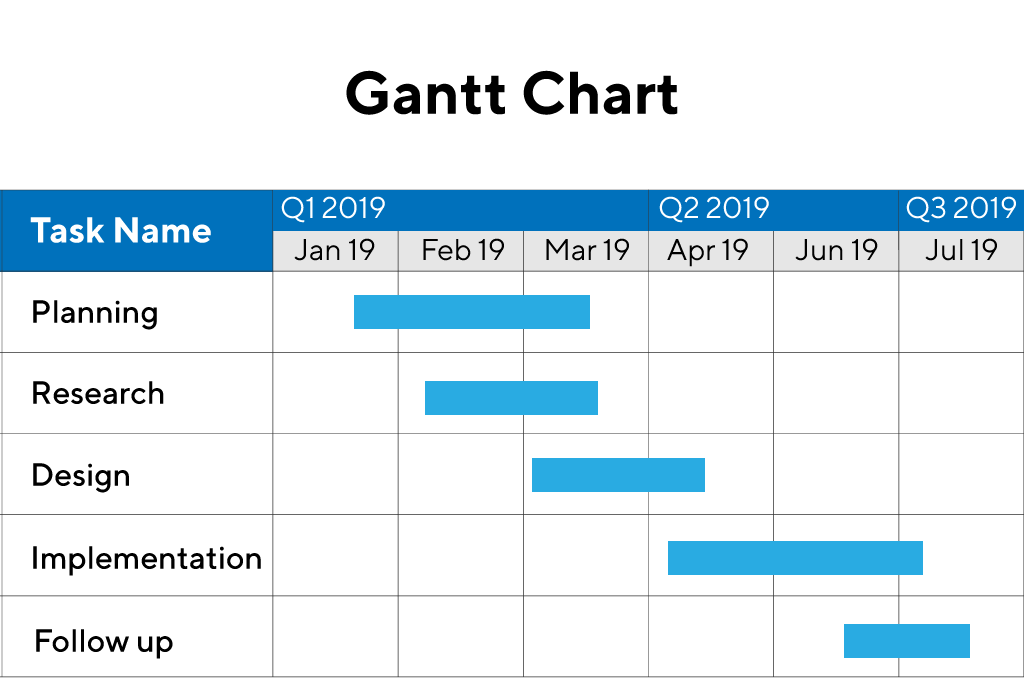What is a Gantt Chart?
A Gantt chart, or harmonogram, is a bar chart that graphically illustrates a schedule for planning, coordinating, and tracking specific tasks related to a single project.
Henry Gantt, an American mechanical engineer, and social scientist, designed the Gantt chart in the 1910s. Since then, it has been used on major infrastructure projects like the Hoover Dam and the U.S. Interstate Highway System.

What are the Use Cases of a Gantt Chart?
Even a century after its introduction, the Gantt chart continues to be an important tool in project and program management. Described in 1999 as “one of the most widely used management tools for project scheduling and control.”
The anatomy is straightforward: Tasks appear on the vertical axis, and time intervals, or activity duration, appear along the horizontal axis.
These charts are commonly used by teams in construction, consulting, marketing, manufacturing, HR, software development, and event planning.
What are the Pros and Cons of a Gantt Chart?
A Gantt chart excels at illustrating a “big picture” view for projects of any size. It also enables project stakeholders to identify milestones and monitor progress by showing which tasks need to be completed by a specific date. In addition, you can easily identify any functions that fall behind schedule and take the appropriate action.
While a Gantt chart provides a simple visual into the progress of a project, preparing and managing one often grows increasingly complex due to the sheer number of tasks and resources required for larger projects. Other disadvantages include:
- The need for constant updating
- Bar size doesn’t indicate the amount of work
- Difficulty in seeing the entire chart on a single page
How are Gantt Charts Useful for Product Managers?
Product managers can use Gantt charts to provide a strategic, high-level view of a project. They can use them to identify tasks and resources needed for a project and share due dates for task completion.
![[Free report] 2021 State of Product Management ➜](https://no-cache.hubspot.com/cta/default/3434168/35d36a84-b157-43a1-acb7-b972dcb1d1ad.png)
Why is it not good as a product roadmap?
A product roadmap, a high-level strategic document created and maintained to communicate the strategic vision and objectives of a product, is used by managers in many, such as product, IT, and marketing. Styles include roadmap timeline, roadmap without dates, and kanban.
While the chart provides a project overview and a good deal of insight into the progress of a project, it doesn’t have the inherent flexibility of a product roadmap. Another key differentiator between the two is that a traditional Gantt chart doesn’t indicate task dependencies. Thus, if a task falls behind schedule, you can’t see how that will impact other tasks. Ultimately, what sets the two apart is that roadmaps enable product teams to have greater control over whether to include a roadmap timeline, how granular that timeline should be, and which audiences should be allowed to see date-related details.

